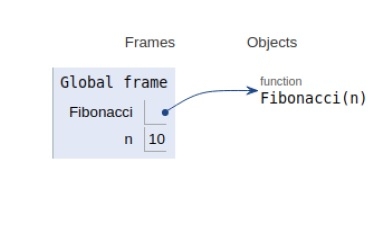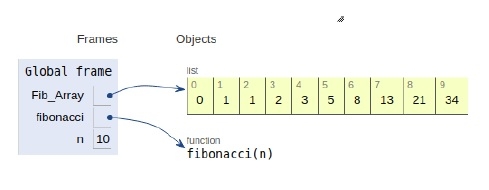
 Data Structure
Data Structure Networking
Networking RDBMS
RDBMS Operating System
Operating System Java
Java MS Excel
MS Excel iOS
iOS HTML
HTML CSS
CSS Android
Android Python
Python C Programming
C Programming C++
C++ C#
C# MongoDB
MongoDB MySQL
MySQL Javascript
Javascript PHP
PHP
- Selected Reading
- UPSC IAS Exams Notes
- Developer's Best Practices
- Questions and Answers
- Effective Resume Writing
- HR Interview Questions
- Computer Glossary
- Who is Who
Python Program for n-th Fibonacci number
In this article, we will compute the nth Fibonacci number.
A Fibonacci number is defined by the recurrence relation given below −
Fn = Fn-1 + Fn-2
With F0= 0 and F1 = 1.
First, few Fibonacci numbers are
0,1,1,2,3,5,8,13,..................
We can compute the Fibonacci numbers using the method of recursion and dynamic programming.
Now let’s see the implementation in the form of Python script
Approach 1: Recursion Method
Example
#recursive approach
def Fibonacci(n):
if n<0:
print("Fibbonacci can't be computed")
# First Fibonacci number
elif n==1:
return 0
# Second Fibonacci number
elif n==2:
return 1
else:
return Fibonacci(n-1)+Fibonacci(n-2)
# main
n=10
print(Fibonacci(n))
Output
34
The scope of all the variables declared is shown below.

Approach 2: Dynamic Programming Method
Example
#dynamic approach
Fib_Array = [0,1]
def fibonacci(n):
if n<0:
print("Fibbonacci can't be computed")
elif n<=len(Fib_Array):
return Fib_Array[n-1]
else:
temp = fibonacci(n-1)+fibonacci(n-2)
Fib_Array.append(temp)
return temp
# Driver Program
n=10
print(fibonacci(n))
Output
34
The scope of all the variables declared is shown below

Conclusion
In this article, we learned about the computation of nth Fibonacci number using recursion and dynamic programming approach.

Advertisements